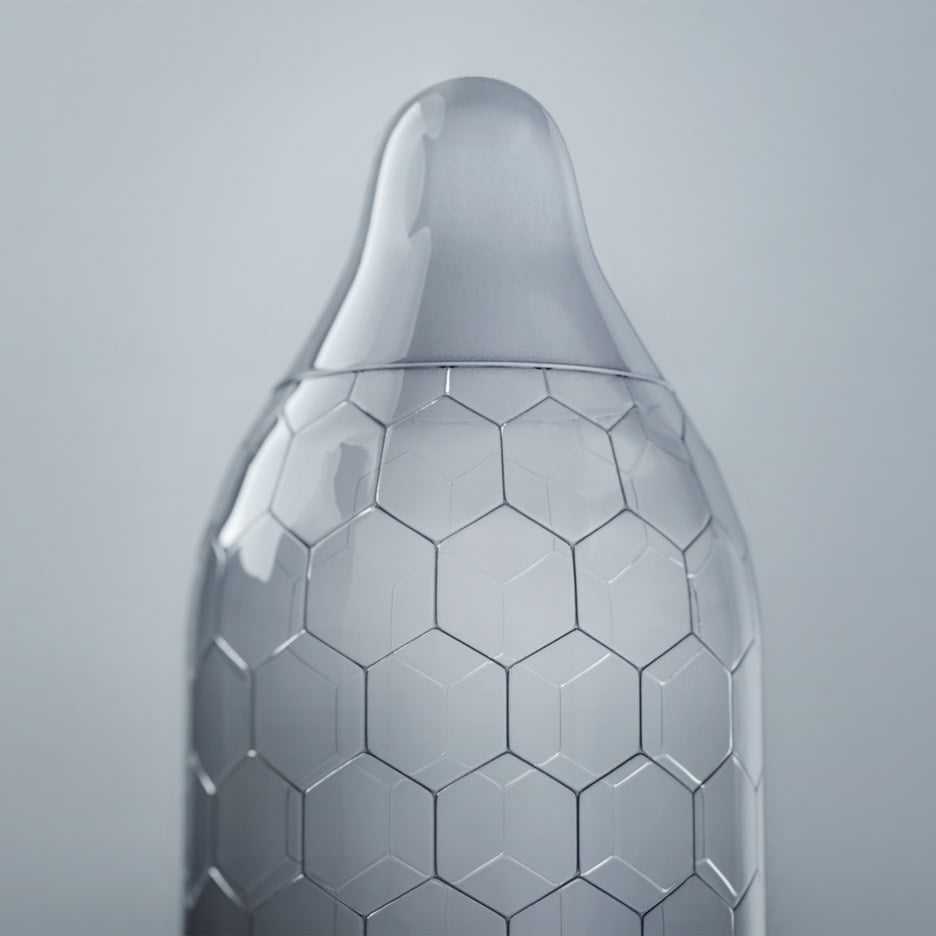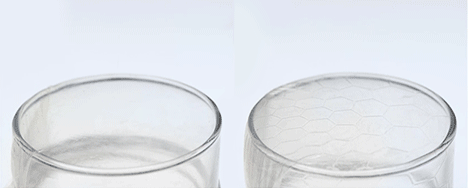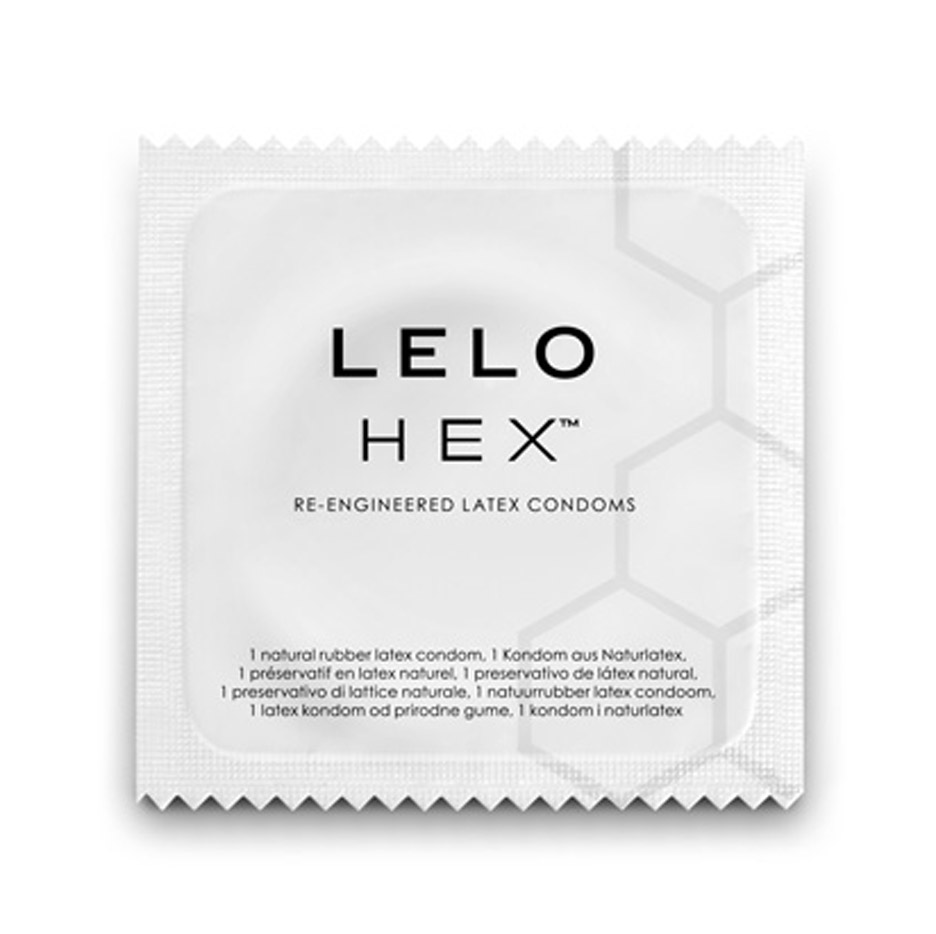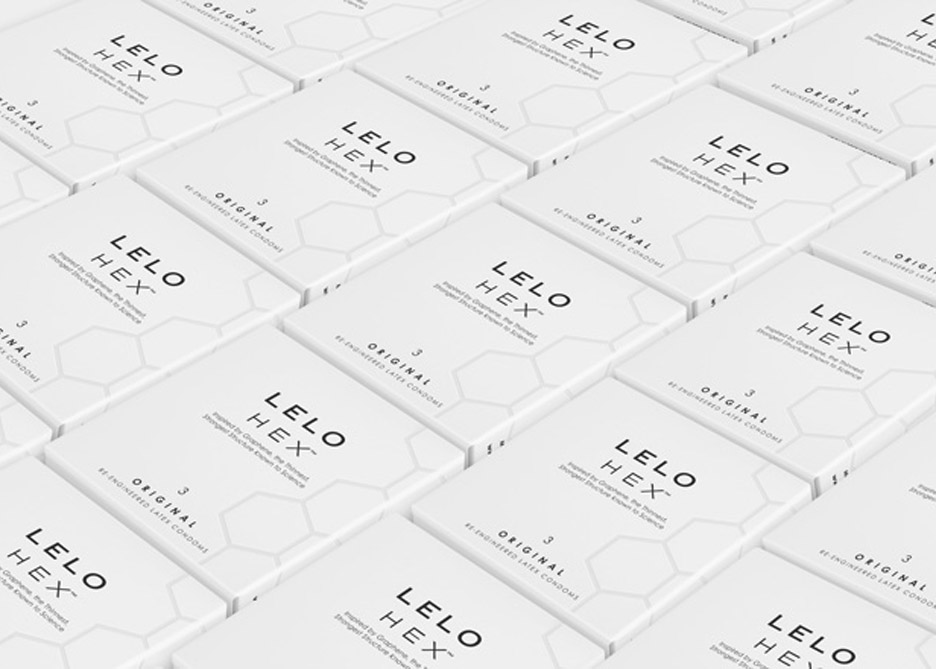Hex condom features a tear-resistant honeycomb surface
Swedish sex toy company Lelo has developed a condom with hexagonal-shaped cells that the company claims will tear less than others on the market.
Hex was designed to tackle the most common consumer complaints about condoms – that they break, slip and reduce sensation.
Its structural integrity and added grip comes from the addition of a hexagonal webbing, which means the product can withstand more stress than a regular condom, even though it is still made of latex.

"There's a reason why honeycombs are the shape they are, and why snake scales move the way they do," said Filip Sedic, inventor of Hex and founder of Lelo. "It's because hexagons are strong, symmetrical and tessellate perfectly."
"They're nature's go-to shape for anything needing to be at once lightweight, and incredibly strong."

Hex's hexagonal web is raised by 0.01mm on the inside of the condom in order to provide more grip and reduce slippage – like wet-weather tires.
The company demonstrates Hex's structural advantage on its website by showing it and a regular condom stretched over the rim of a glass.
Both are then pierced with a needle, and while the regular condom splits, Hex's surface remains more intact, arguably offering more protection.

The tear-resistant webbing in Hex is inspired by new ultra-thin material graphene, which is made up of carbon atoms densely packed into a hexagonal pattern.

Other scientists are combining graphene with latex to create condoms that are "thinner, stronger, safer and more pleasurable".
Hex is 0.045 millimetres thick compared to 0.07 millimetres for standard condoms, although ultra-thin varieties exist that are as fine as 0.02 millimetres.
Lelo's condom is the result of three years of research and four years of testing.
For decades, condoms have been made by dipping a cylindrical mould into a vat of liquid latex and peeling the material off when it dries.

To create the Hex condom, Lelo designed a specific mould engraved with a honeycomb pattern. The mould is first dunked into the latex mixture to fill the impressions, and again to cover the rest of the mould.
The latex condom was first introduced in the 1920s, when it surpassed the hand-dipped rubber sheathes used previously because it was both easier to produce and more comfortable to wear.
Designers have come up with a variety of other ideas for improving contraception, including a condom wrapper that can be opened with a simple finger-clicking action and an open-source, intrauterine device made using a one-cent coin.